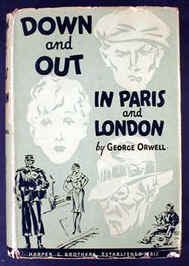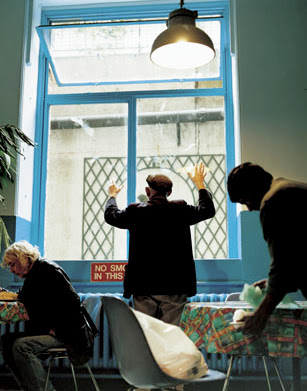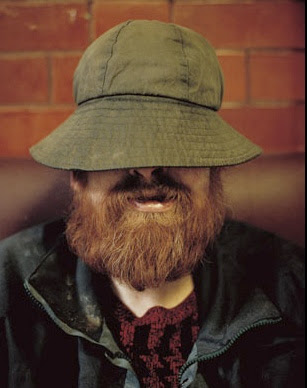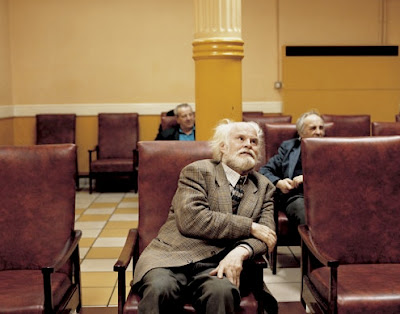Camden Town is world-renowned for its music scene, but two former Camden inhabitants had a rock ‘n’ roll lifestyle that most of the musicians who live or work in the London borough these days can only dream about, perhaps even Amy Winehouse, and the two men lived there over 130 years ago.
There is a small plaque, placed anonymously in the 1950s, on the wall of number 8 Royal College Street in Camden – it marks where the French poets Verlaine and Rimbaud lived, somewhat rumbustiously, during the year 1873.
Arthur Rimbaud was born in 1854 and from the age of 6 was brought up solely by his mother. He ran away from home consistently during his childhood and eventually left home to join the
Paris Commune in 1871. He had already decided that he was to be an anarchist and a poet, and had started drinking very heavily. He sent poems to the eminent poets of the time, one of whom was the symbolist poet Paul Verlaine, and due to the ridiculously prodigious quality of Rimbaud’s writing and troubled home-life he invited him to stay at his family house in Paris.
Verlaine, who was ten years older than Rimbaud and was until then happily married with a small baby boy, promptly fell in love with the sullen blue-eyed adolescent prodigy and he left his wife. The two lovers scandalised literary Paris with their general licentious behaviour usually involving absinthe or drug-taking of some sort. They eventually ran away, initially to Brussels but then travelling to the huge and haphazard city of London, losing themselves amongst the hundreds of thousands of refugees and where they revelled in the city’s strange language:
Dans le brouillard rose et jaune et sale des sohos
Avec des indeeds et des all rights et des haos
Le feu du ciel sur cette ville de la Bible
In the pink and yellow and dirty fog of the Sohos
With ‘indeeds’ and ‘alrights’ and ‘hos’
O Heaven’s fire fall on this city of the Bible

Both were at the height of their poetical powers and were writing poetry that remains central to 19th century French literature, but they were desperately poor and advertised in the Daily Telegraph, offering lessons in French, Latin and Literature and promising ‘perfection’ and ‘finesse’. However the beginning of the end of their stormy, infamous relationship took place while living in Camden and summed up their life together being equally comic and grotesque.
Verlaine had gone to the market in Camden for lunch and brought back two kippers and some oil to cook them in. He was holding the kippers out in front of him at arm’s length and Rimbaud sitting on the window ledge of the room they rented at the top of the house caught site of his older lover and burst out laughing. When he knew Verlaine was in earshot he shouted out ‘Ce que tu as l’air con!’ (You really look like a dick!). Verlaine, with all the dignity he could muster, walked quietly into the house, packed his case and while not saying a word walked out of the door. Rimbaud tried, but failed, to get him to see the funny side of his comment, but Verlaine hailed a cab and subsequently caught a ferry from St Katherine’s Dock to Belgium.
A week later they were briefly reunited in Brussels, but after a drunken night full of arguments and fighting. Their fights often involved one or both of them drawing knives or razors, however this time Verlaine went further and shot Rimbaud through the wrist. Verlaine was arrested and subsequently imprisoned, officially for assault, although realistically it was for sodomy. The two lovers never met again.
Sanitary Accommodation
George Bernard Shaw was a councillor in the borough of Camden between 1897 and 1906 and championed the cause and energetically campaigned,  for “the unmentionable question of sanitary accommodation” for women. He also thought that the normal charge of one penny “an absolutely prohibitive charge for a poor woman.” He was criticised by other councillors who thought that women who so far ‘forgot their sex’ did not deserve toilets. Despite this eventually Shaw got his way and in 1910, at the junction of Parkway and Camden High Street, he was more than responsible for the first ever purposely built free public convenience for women in the United Kingdom.
for “the unmentionable question of sanitary accommodation” for women. He also thought that the normal charge of one penny “an absolutely prohibitive charge for a poor woman.” He was criticised by other councillors who thought that women who so far ‘forgot their sex’ did not deserve toilets. Despite this eventually Shaw got his way and in 1910, at the junction of Parkway and Camden High Street, he was more than responsible for the first ever purposely built free public convenience for women in the United Kingdom.
Building on an angry hangover
One of the best songs written and recorded by Madness, but less well-known than many, is One Better Day which has the opening line Arlington House, address: no fixed abode. The song was written about a huge homeless shelter, one of a chain of hostels, built in 1905 by the Victorian philanthropist Lord Rowton. Rowton wanted to provide clean and healthy accommodation for working men, who in those days were forced to stay in filthy and flea-ridden lodging houses or often, of course, nowhere at all.
George Orwell in Down and Out in Paris and London written in 1936 wrote about Arlington House, “The best lodging houses are the Rowton Houses, where the charge is a shilling

, for which you get a cubicle to yourself, and the use of excellent bathrooms. You can also pay half a crown for a special, which is practically hotel accommodation. The Rowton Houses are splendid buildings, and the only objection to them is the strict discipline, with rules against cooking, card playing, etc.”
Other writers who have in their time stayed at Arlington House are the Irish poets Brendan Behan and Patrick Kavanagh who wrote in his autobiography The Green Fool – ‘Many Irish boys made Rowton House, Camden Town, first stop from Mayo…the soft voices of Mayo and Galway sounding in that gaunt impersonal place fell like warm rain on the arid patches of my imagination. These boys were true peasants. They walked with an awkward gait and were shy. To me they looked up as to a learned man and asked me questions I couldn’t answer.’
The area around Camden has had a large Irish community since the 1840s when waves of Irish emigration occurred mainly because of the devastating famines in Ireland, but also because of the workforce needed to build the network of railways spreading across Britain at an incredible rate. After the Second World War another generation of Irish immigrants arrived to help re-build ‘on an angry hangover’ swathes of London destroyed by the German bombs. Thousands of men mostly from rural close-knit communities descended on London working ‘on the lump’ for Murphy, John Laing, Wimpey and McAlpine. Many of these hard-working, hard-drinking Irish navvies, especially as they grew older, became destitute and alcoholic and often both, ended up living at Arlington House. It still exists as a hostel today with a third of its inhabitants of Irish extraction – victims of displacement and poverty amongst what has become one of the flashier and trendier parts of London.



photos of Arlington House from Hide The Can by Deidre O’Callaghan
Music
Books
 Both were at the height of their poetical powers and were writing poetry that remains central to 19th century French literature, but they were desperately poor and advertised in the Daily Telegraph, offering lessons in French, Latin and Literature and promising ‘perfection’ and ‘finesse’. However the beginning of the end of their stormy, infamous relationship took place while living in Camden and summed up their life together being equally comic and grotesque.
Both were at the height of their poetical powers and were writing poetry that remains central to 19th century French literature, but they were desperately poor and advertised in the Daily Telegraph, offering lessons in French, Latin and Literature and promising ‘perfection’ and ‘finesse’. However the beginning of the end of their stormy, infamous relationship took place while living in Camden and summed up their life together being equally comic and grotesque. for “the unmentionable question of sanitary accommodation” for women. He also thought that the normal charge of one penny “an absolutely prohibitive charge for a poor woman.” He was criticised by other councillors who thought that women who so far ‘forgot their sex’ did not deserve toilets. Despite this eventually Shaw got his way and in 1910, at the junction of Parkway and Camden High Street, he was more than responsible for the first ever purposely built free public convenience for women in the United Kingdom.
for “the unmentionable question of sanitary accommodation” for women. He also thought that the normal charge of one penny “an absolutely prohibitive charge for a poor woman.” He was criticised by other councillors who thought that women who so far ‘forgot their sex’ did not deserve toilets. Despite this eventually Shaw got his way and in 1910, at the junction of Parkway and Camden High Street, he was more than responsible for the first ever purposely built free public convenience for women in the United Kingdom. , for which you get a cubicle to yourself, and the use of excellent bathrooms. You can also pay half a crown for a special, which is practically hotel accommodation. The Rowton Houses are splendid buildings, and the only objection to them is the strict discipline, with rules against cooking, card playing, etc.”
, for which you get a cubicle to yourself, and the use of excellent bathrooms. You can also pay half a crown for a special, which is practically hotel accommodation. The Rowton Houses are splendid buildings, and the only objection to them is the strict discipline, with rules against cooking, card playing, etc.”














